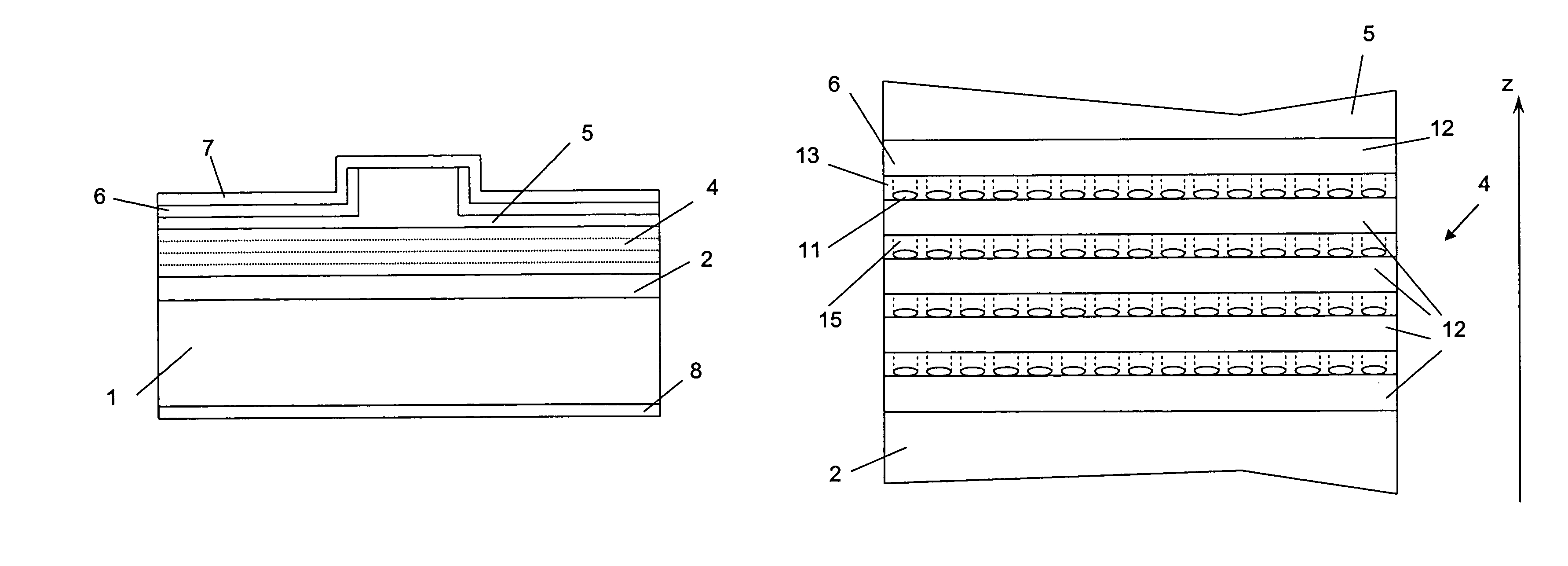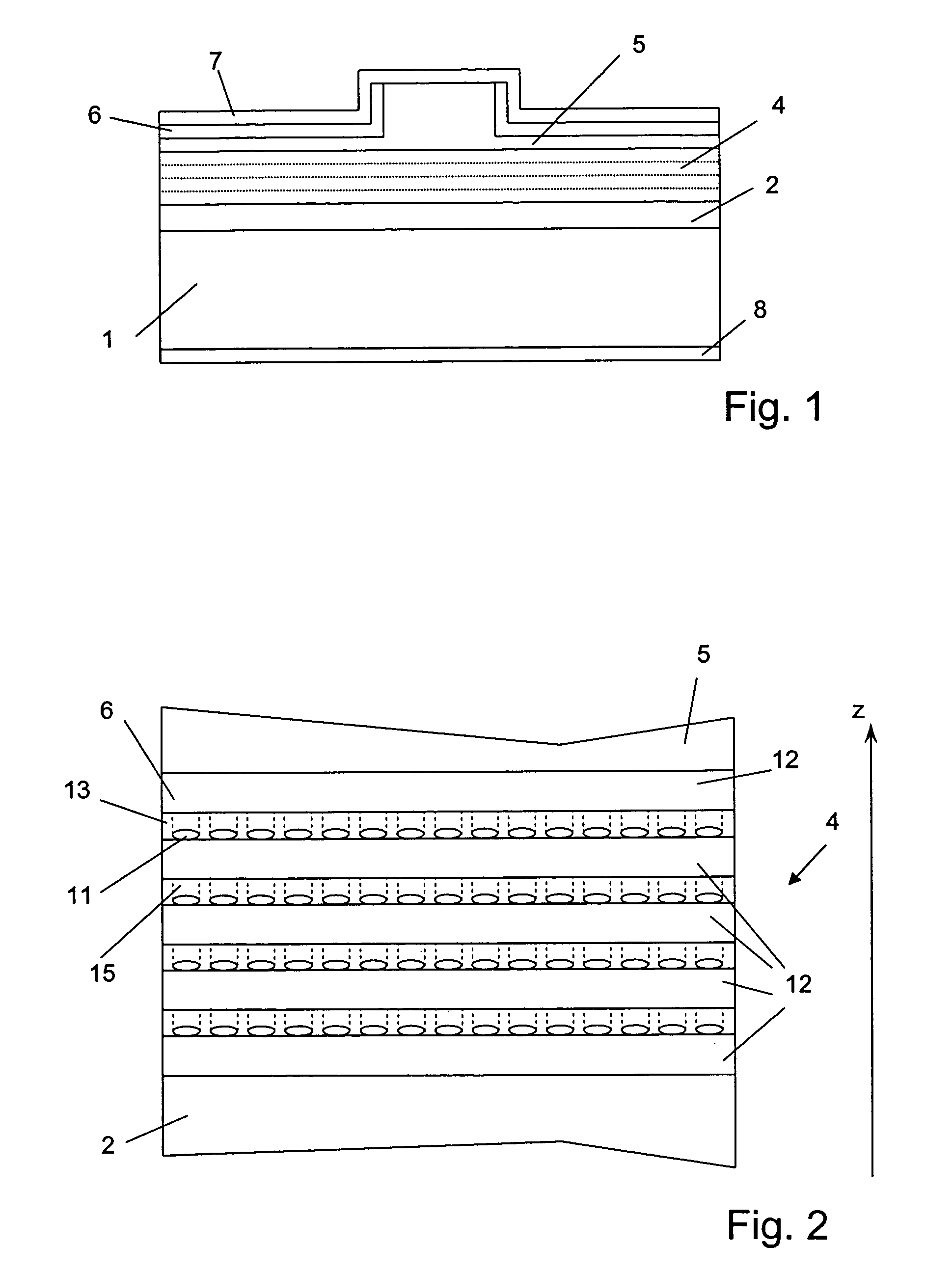Broadband light emitting device
a light-emitting device and wide-band technology, applied in the direction of laser optical resonator construction, nanotechnology, lasers, etc., can solve the problems of difficult implementation, trivial control of quantum dot size dispersions, and difficulty in reproducing, so as to increase the quantum dot height and widen the emission spectrum
- Summary
- Abstract
- Description
- Claims
- Application Information
AI Technical Summary
Benefits of technology
Problems solved by technology
Method used
Image
Examples
Embodiment Construction
[0027]The device schematically shown in FIG. 1 is suitable for emission around a technologically important wavelength of 1.3 μm. It comprises a semiconductor heterostructure including a GaAs substrate 1. The substrate comprises an Si-doped (the Si doping here being an n-doping) InGaP or AlGaAs semiconductor cladding layer 2. On top of the Si-doped cladding layer, a layered structure 4 forming a PN-junction and comprising the active zone is placed. The layered structure 4 comprises a plurality of layers of quantum dots, as will be explained in more detail below. On the layered structure 4, there is a second cladding layer 5 with a ridge structure. The embodiment of the figure further comprises a thin insulating layer 6, for example an oxide layer, and a top electrode layer 7. A second electrode 8 (or bottom electrode) is provided on the backside of the substrate 1. Upon injection of a current—the current flows between the top and the bottom electrode—electroluminescence generates rad...
PUM
 Login to View More
Login to View More Abstract
Description
Claims
Application Information
 Login to View More
Login to View More - R&D
- Intellectual Property
- Life Sciences
- Materials
- Tech Scout
- Unparalleled Data Quality
- Higher Quality Content
- 60% Fewer Hallucinations
Browse by: Latest US Patents, China's latest patents, Technical Efficacy Thesaurus, Application Domain, Technology Topic, Popular Technical Reports.
© 2025 PatSnap. All rights reserved.Legal|Privacy policy|Modern Slavery Act Transparency Statement|Sitemap|About US| Contact US: help@patsnap.com



